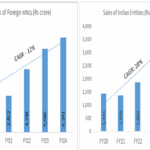1. Detecting and responding to disease outbreaks


WHO/L. Robertson
Health workers examine environmental samples at a polio laboratory in Damascus
Dangerously low vaccination rates in some areas, combined with a breakdown of water and sanitation systems and pockets of malnutrition, are making disease outbreaks in Syria more frequent and deadly.
Detecting outbreaks early and responding quickly saves lives. WHO supports over 1 700 health care facilities that report to a disease early warning system. Last year, outbreaks of measles, hepatitis A and typhoid fever were rapidly detected and curtailed.
In 2017, a case of circulating vaccine-derived poliovirus type 2 was identified in Deir-ez-Zor governorate. In response, WHO and partners meticulously tracked the outbreak, engaged all parties in affected areas and organized mass polio vaccination campaigns that reached 2.6 million children – even in areas of active conflict. In late 2018, the outbreak was declared over. This achievement would not have been possible without the bravery and dedication of tens of thousands of local health workers.
2. Delivering medical supplies despite insecurity, damaged roads, bureaucratic obstacles, and import restrictions


WHO
An airlift of 17 tonnes of health supplies for north-east Syria arrives in the city of Qamishli in February 2018
WHO works inside Syria and across its borders to deliver life-saving assistance to millions of Syrians. In 2014, the United Nations Security Council authorized the delivery of humanitarian aid to Syria from neighbouring countries. As a result, WHO is able to provide life-saving support in the conflict-torn north-west via operations managed by its hub in Gaziantep, Turkey.
In 2018 WHO delivered over 1900 tonnes of health supplies and equipment across Syria. The medicines included in these deliveries were enough for more than 10 million treatments, including 4.2 million shipped cross-border.
These supplies change lives. In northern Homs, six-month-old Shams recovered from malnutrition. In Aleppo, Salma received medication to stay healthy after giving birth to her first child. Nour, aged 11, displaced to Damascus, now has access to epilepsy medication. Two-year-old Ahmad from Raqqa is receiving life-saving cancer treatment.
3. Using mobile teams to reach vulnerable populations


WHO
A mobile clinic provided to the Aleppo Directorate of Health provides care to children, women and men displaced from Afrin in March 2018
One way that WHO reaches vulnerable populations is by bringing health care to them via mobile clinics. These specially modified trucks are equipped with separate rooms for examinations and medical procedures and are usually staffed by doctor, nurses, and pharmacy assistants. They are a lifeline in areas that are remote or where public health facilities have been destroyed.
In 2018 WHO donated 8 mobile clinics to underserved areas. WHO also dispatched 36 ambulances and 75 mobile medical teams to camps and other priority areas. In addition, WHO’s hub in Gaziantep supports 16 mobile teams to reach rural areas, including 4 teams dedicated to mental health. Mobile teams can go where they are needed and respond quickly to changing conditions.
4. Restoring local health care
13.2 million people need health assistance in Syria, but millions lack access to it. Due to attacks or staff shortages, only about half of Syria’s public health facilities are fully functional. With over 80% of the population living below the poverty line, many people who need health care simply can’t afford the cost of transportation to reach properly equipped or specialized health care facilities.
In 2018 WHO rehabilitated 3 primary health care centres in Aleppoand rural Damascus, and a tuberculosis Centre in Aleppo. WHO also helped 9 hospitals in north-west Syria to resume services.
5. Training health workers


WHO
A trauma management training supported by WHO
Mass population displacements have contributed to a huge reduction of qualified medical personnel in Syria. For example, Idleb and Aleppo have only 26% of the recommended number of health care workers per 10 000 people required to meet the Sustainable Development Goals. Specialized services such as internal medicine, cardiology and care for chronic diseases are especially affected. In 2018, WHO trained 30 865 people on a wide range of health issues to help address these gaps.
6. Making mental health services more widely available


WHO
Children who’ve been displaced to Damascus participate in psychosocial support activities at Tamayoz Social Care Association, an NGO assisted by WHO
WHO estimates that, as a result of prolonged exposure to violence, one in 30 people in Syria is suffering from a severe mental health condition and at least one in 5 is suffering from a mild to moderate mental health condition.
In north-west Syria there are only 3 trained psychiatrists and only 2 facilities providing inpatient services for acute and severe cases of mental illness. WHO is training health care providers, delivering psychotropic medicines, providing salaries and running costs for mobile teams and one specialized hospital.
Across the country WHO is supporting the integration of mental health services into primary health care and community centres. More than 520 health facilities in Syria are now providing mental health and psychosocial support services.
7. Supporting Syrians with disabilities


WHO
A technician fits Ismail, 17, from Qamishli, for a prosthetic foot
As the conflict drags on, the number of people with injuries and disabilities continues to grow. In some parts of the country, rates of disability have reportedly risen to up to 30% of the population – double the global average.
WHO is procuring and distributing supplies to produce artificial limbs, and is working to restore damaged physical rehabilitation centres. WHO also supports a partner that manages 5 health facilities in north Syria that provide physical rehabilitation services.
8. Increasing health coordination and efficiency


WHO
WHO and partners work together to conduct an assessment at an informal settlement hosting families displaced from East Ghouta
WHO leads the humanitarian Health Cluster in Syria, coordinating hundreds of international and national partners to deliver health assistance. This leadership role helps increase the coordination, efficiency, and overall impact of the health sector.
healthy soch







